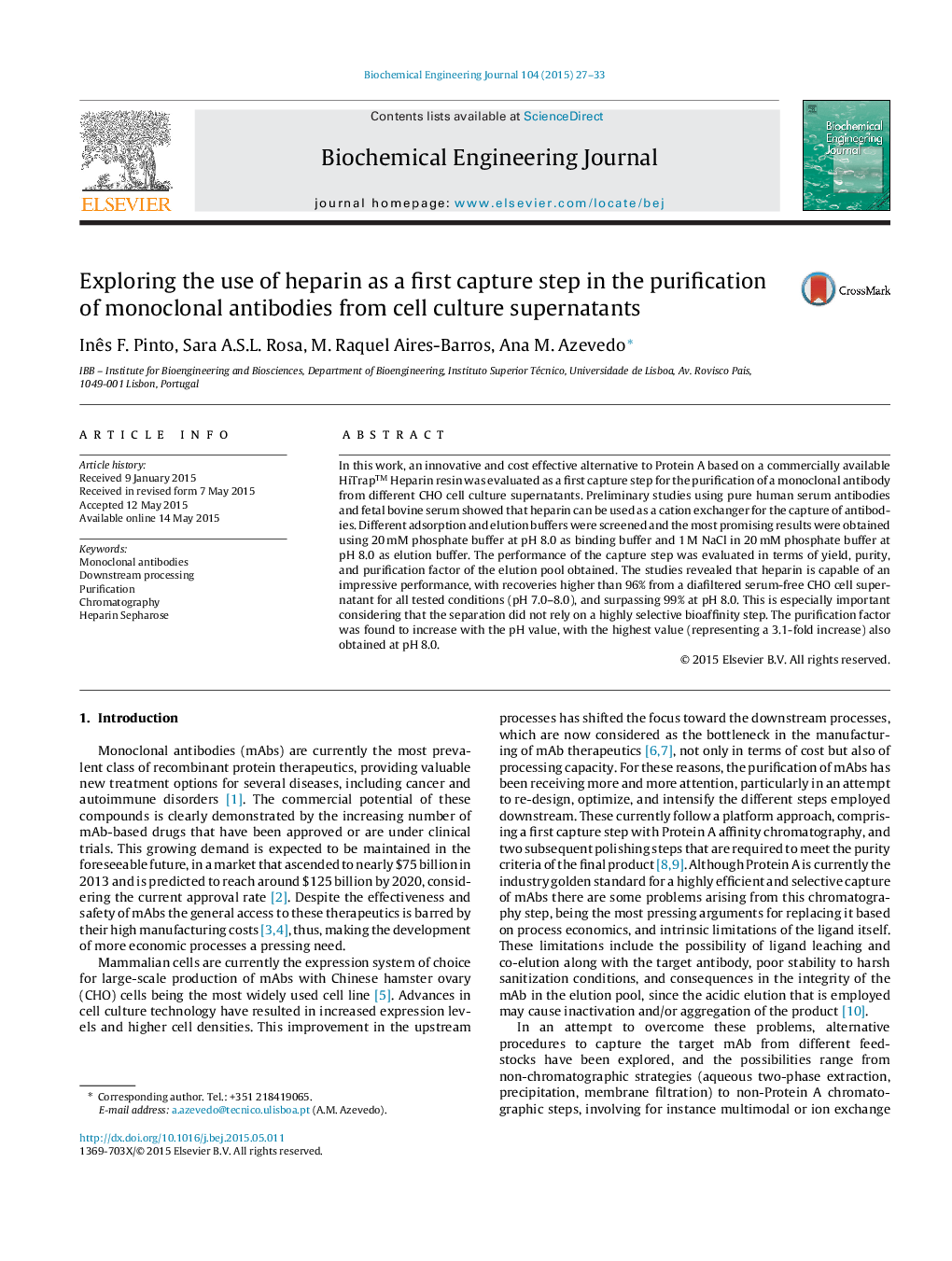| کد مقاله | کد نشریه | سال انتشار | مقاله انگلیسی | نسخه تمام متن |
|---|---|---|---|---|
| 2785 | 135 | 2015 | 7 صفحه PDF | دانلود رایگان |
• Monoclonal antibodies were captured using heparin as a cation exchanger.
• Feedstock material included serum-free and serum-containing supernatants.
• Major protein impurities were successfully collected in flowthrough fractions.
• Antibody recoveries >96% were obtained from a serum-free CHO cell supernatant.
• Recoveries obtained were comparable to those using Protein A.
In this work, an innovative and cost effective alternative to Protein A based on a commercially available HiTrap™ Heparin resin was evaluated as a first capture step for the purification of a monoclonal antibody from different CHO cell culture supernatants. Preliminary studies using pure human serum antibodies and fetal bovine serum showed that heparin can be used as a cation exchanger for the capture of antibodies. Different adsorption and elution buffers were screened and the most promising results were obtained using 20 mM phosphate buffer at pH 8.0 as binding buffer and 1 M NaCl in 20 mM phosphate buffer at pH 8.0 as elution buffer. The performance of the capture step was evaluated in terms of yield, purity, and purification factor of the elution pool obtained. The studies revealed that heparin is capable of an impressive performance, with recoveries higher than 96% from a diafiltered serum-free CHO cell supernatant for all tested conditions (pH 7.0–8.0), and surpassing 99% at pH 8.0. This is especially important considering that the separation did not rely on a highly selective bioaffinity step. The purification factor was found to increase with the pH value, with the highest value (representing a 3.1-fold increase) also obtained at pH 8.0.
Journal: Biochemical Engineering Journal - Volume 104, 15 December 2015, Pages 27–33
